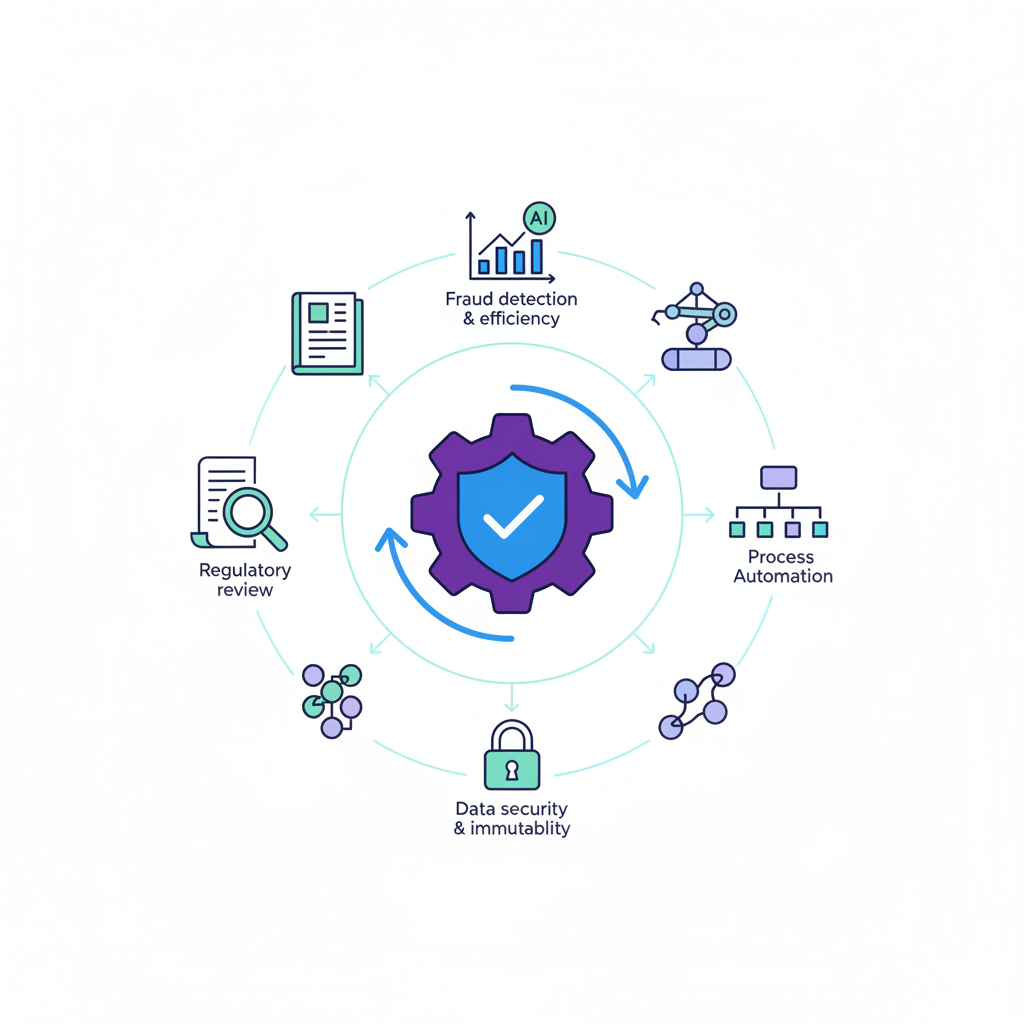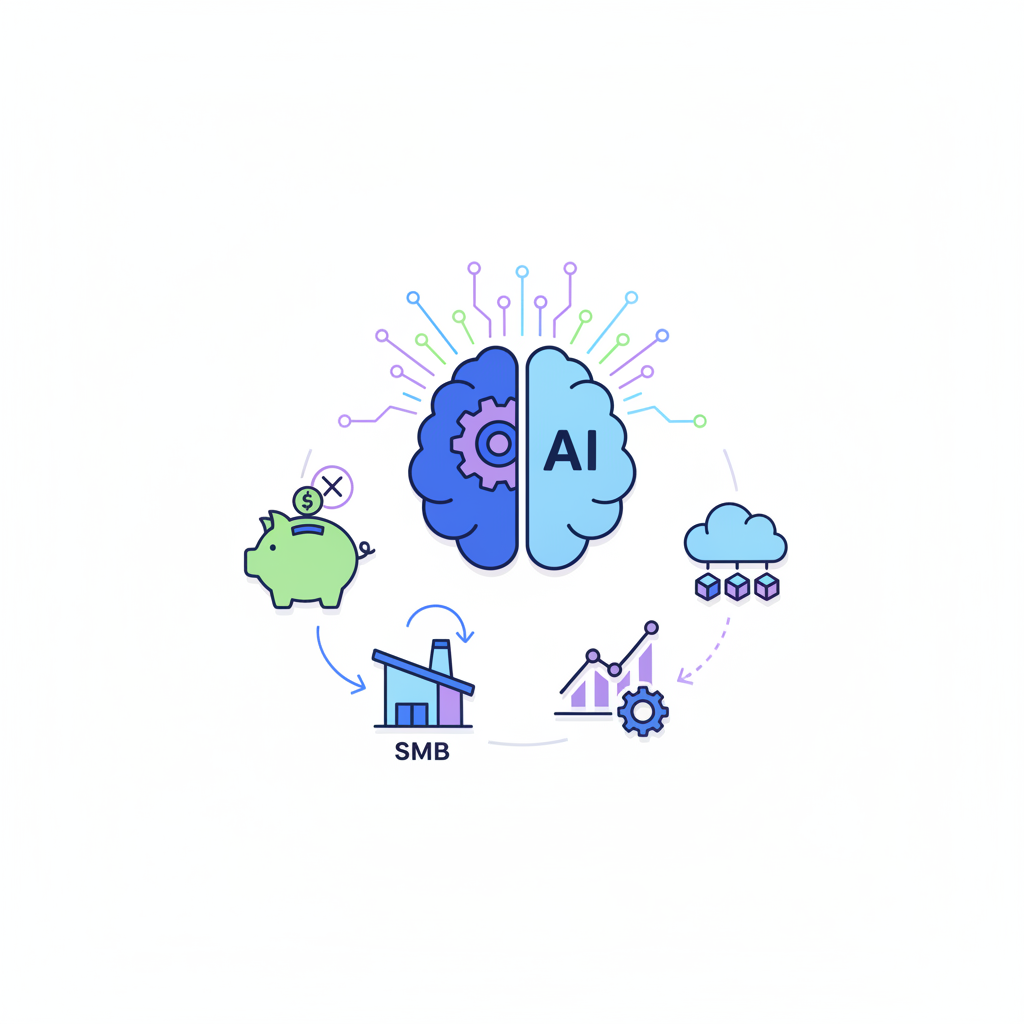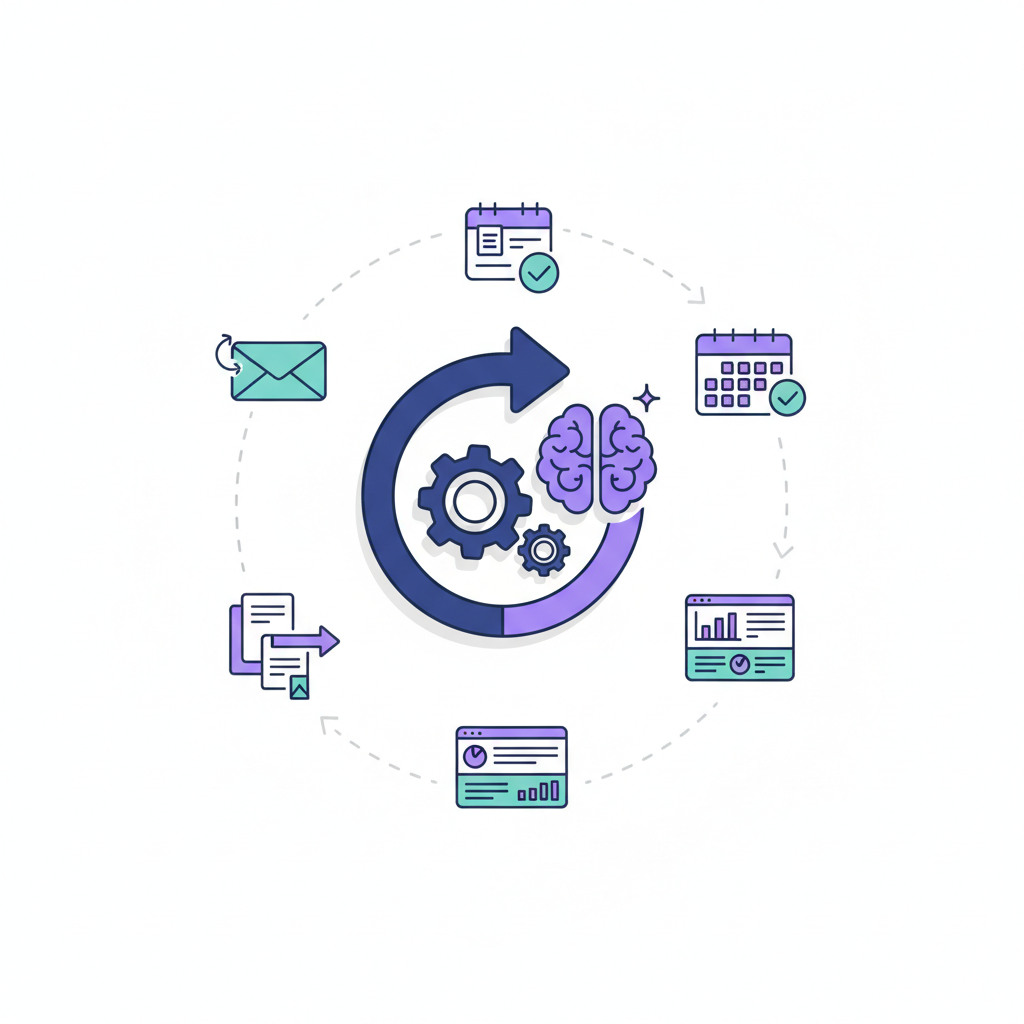The AI Odyssey: Tracing the Path of Artificial Intelligence
Artificial intelligence, once the realm of science fiction, has seamlessly woven itself into the fabric of our daily lives. From the personalized recommendations that guide our online shopping to the sophisticated algorithms powering medical diagnostics and autonomous vehicles, the pervasive and transformative nature of artificial intelligence is undeniable. It’s in our smartphones, our smart homes, and increasingly, in the very infrastructure that supports modern society. This omnipresence, while exciting, also underscores a critical need: the imperative to understand AI’s journey from its conceptual roots to its potential future. Without a clear grasp of its evolution, capabilities, and trajectory, navigating its profound impact effectively becomes a daunting challenge. This article embarks on a comprehensive exploration of AI’s past milestones, dissecting its present capabilities, and peering into its future trajectory. We will delve into the ethical considerations that accompany its advancement and analyze the global dynamics shaping its development. Our journey will reveal that AI is not merely a technological advancement; it represents a fundamental shift in human capability, demanding careful consideration of its evolution and destination. Understanding where AI is going requires a deep appreciation of where it has been and where it stands today, providing a crucial framework for anticipating and shaping the world to come. This exploration aims to provide a holistic perspective on artificial intelligence, offering insights into its profound influence on humanity.
The Genesis of Intelligence: A Brief History of AI
The journey of artificial intelligence is a fascinating narrative, tracing the roots of AI back much further than many might imagine. Before the advent of computers, the concept of intelligent machines existed in ancient myths and philosophical discourse. Automata, mechanical devices designed to mimic human or animal actions, appeared in various cultures, hinting at humanity's enduring fascination with creating artificial life. However, the true intellectual groundwork for what is artificial intelligence today began to solidify in the mid-20th century. Visionaries like Alan Turing laid foundational ideas, particularly with his seminal 1950 paper "Computing Machinery and Intelligence," which introduced the "Turing Test" as a criterion for machine intelligence. This marked a pivotal moment in the evolution of artificial intelligence, shifting it from pure philosophy to a scientific pursuit.
The 1950s and 60s ushered in what is often called the "Golden Age" of AI. Fueled by post-war optimism and significant funding, researchers made exciting progress. The Dartmouth Workshop in 1956, often cited as the birth of AI as a field, brought together pioneers like John McCarthy, Marvin Minsky, and Herbert Simon. Early programs like Logic Theorist and ELIZA demonstrated rudimentary problem-solving and natural language processing. However, this initial excitement was followed by periods of disillusionment, known as "AI Winters." The first occurred in the 1970s, as the ambitious promises of early AI researchers failed to materialize, leading to funding cuts and a general loss of interest. A second AI winter struck in the late 1980s, after the boom in "expert systems" proved to have limitations, particularly in handling real-world complexity and common-sense reasoning. This comprehensive timeline of AI reveals a cyclical pattern of hype, disappointment, and eventual resurgence.
The resurgence of AI in the late 20th and early 21st centuries was not a sudden burst but a gradual accumulation of critical advancements. Three key factors fueled this comeback: machine learning, big data, and computational power. Breakthroughs in algorithms, particularly the re-emergence and refinement of neural networks (deep learning), provided powerful new tools. Simultaneously, the explosion of digital information created vast datasets, which are essential for training these data-hungry algorithms. Finally, the exponential growth in computational power, driven by Moore's Law and the development of specialized hardware like GPUs, made it possible to process these massive datasets with complex models.
Key milestones illustrate this journey. In 1997, IBM's Deep Blue famously defeated world chess champion Garry Kasparov, a symbolic victory for machine intelligence. Expert systems, though limited, found practical applications in specific domains like medical diagnosis. Early machine learning successes in areas like spam filtering and recommendation engines quietly demonstrated AI's practical utility. These developments collectively paved the way for the sophisticated artificial intelligence we see today, showcasing a persistent drive to understand and replicate intelligence. The history of AI is a testament to human ingenuity, marked by both soaring ambition and humbling setbacks, ultimately leading to an ever-deepening understanding of what intelligence truly entails.
AI in Action: The Present Landscape of Artificial Intelligence
Today, artificial intelligence is no longer a futuristic concept but a tangible force actively shaping our world. The current AI capabilities are astonishing, demonstrating how AI is changing the world across virtually every sector. One of the most significant AI advancements has been in Generative AI, exemplified by Large Language Models (LLMs) like GPT-4 and image generation tools such as DALL-E and Midjourney. These models can create human-like text, generate realistic images, compose music, and even design code, pushing the boundaries of creative automation. Beyond generation, Computer Vision has reached remarkable levels of accuracy, enabling facial recognition, object detection, and autonomous navigation, which are critical for self-driving cars and advanced surveillance systems. Natural Language Processing (NLP) allows machines to understand, interpret, and generate human language, powering virtual assistants, translation services, and sentiment analysis tools. Robotics, too, has seen immense progress, with AI-powered robots performing complex tasks in manufacturing, logistics, and even surgical procedures, showcasing the practical applications of AI in today's world.
AI's impact across industries is profound and multifaceted, leading to widespread AI transformation. In business, AI is revolutionizing operations through automation of routine tasks, predictive analytics for market trends, and hyper-personalized customer experiences. From supply chain optimization to fraud detection, AI in business is driving efficiency and competitive advantage. Scientific research is accelerating at an unprecedented pace, with AI in science assisting in drug discovery, protein folding (e.g., AlphaFold), climate modeling, and astronomical data analysis, enabling breakthroughs that would be impossible with human effort alone. Marketing strategies are being redefined by AI in marketing, which analyzes vast consumer data to target audiences with extreme precision, optimize ad spend, and predict purchasing behavior. The labor market is also experiencing significant shifts, with AI in labor automating certain jobs while simultaneously creating new roles focused on AI development, oversight, and integration. This dual effect necessitates a re-evaluation of workforce skills and education.
The global AI landscape is characterized by intense competition and significant investment, reflecting the strategic importance of AI development. Countries like the USA, China, and the European Union are leading in AI research, development, and investment. The USA boasts a robust ecosystem of tech giants and startups, coupled with leading academic institutions. China has made massive state-backed investments, aiming for global AI dominance by 2030, particularly in areas like computer vision and surveillance. The EU, while perhaps lagging in raw investment compared to the other two, is focusing on ethical AI and robust regulatory frameworks, aiming to set global standards for responsible AI. These geopolitical implications highlight AI as a critical component of national power and economic competitiveness.
Current AI trends indicate a move towards more integrated, personalized, and autonomous systems. Personalization, driven by AI, is becoming ubiquitous, tailoring everything from content recommendations to healthcare plans. Automation is expanding beyond manufacturing floors to white-collar tasks, promising increased productivity. Predictive analytics, powered by sophisticated machine learning models, is enabling organizations to anticipate future events with greater accuracy, from equipment failures to consumer demand. These AI trends collectively paint a picture of an ever-evolving landscape where artificial intelligence continues to push the boundaries of what machines can achieve, fundamentally reshaping how we live, work, and interact with the world around us.
Charting the Course: The Future of Artificial Intelligence
As we look ahead, the future of artificial intelligence promises transformations that could dwarf even the remarkable advancements we've witnessed thus far. To understand where AI is going, it's crucial to define the stages of AI development: Artificial Narrow Intelligence (ANI), Artificial General Intelligence (AGI), and Artificial Superintelligence (ASI). ANI, or narrow AI, represents the current state of AI. These systems are designed and trained for specific tasks, excelling at them but lacking broader cognitive abilities. Examples include chess-playing programs, virtual assistants, and recommendation engines. They are intelligent within their defined domain but cannot generalize their knowledge or perform tasks outside their programming.
The next frontier is Artificial General Intelligence (AGI), which refers to AI systems possessing human-level cognitive abilities across a wide range of tasks. An AGI would be able to understand, learn, and apply intelligence to any intellectual task that a human being can. This includes reasoning, problem-solving, abstract thinking, and learning from experience in a way that generalizes across different domains. The pursuit of AGI is the holy grail for many AI researchers, representing a monumental challenge in AI development. While significant progress has been made, particularly with large language models showing emergent reasoning capabilities, achieving true AGI remains a complex and distant goal, requiring breakthroughs in areas like common-sense reasoning, emotional intelligence, and self-awareness.
Beyond AGI lies Artificial Superintelligence (ASI), a hypothetical stage where AI far surpasses human intellect in virtually every field, including scientific creativity, general wisdom, and social skills. An ASI would not just be smarter than any single human but potentially smarter than all human minds combined. The implications of ASI are profound and widely debated, ranging from utopian visions of solving humanity's greatest challenges to dystopian concerns about loss of human control. While ASI is currently speculative, understanding these stages helps frame the long-term predictions and possibilities of AI.
Emerging technologies are driving the next wave of AI advancements. Quantum AI, leveraging the principles of quantum mechanics, promises to revolutionize computation, potentially enabling AI to tackle problems currently intractable for even the most powerful classical computers. This could unlock new levels of processing power for complex AI models. Explainable AI (XAI) is gaining traction, focusing on making AI decisions transparent and understandable to humans, addressing critical issues of trust and accountability. Advanced robotics will see robots becoming more agile, adaptable, and capable of complex human-robot interaction, moving beyond industrial settings into everyday life. Brain-Computer Interfaces (BCI) aim to create direct communication pathways between the brain and external devices, potentially enhancing human cognitive abilities and enabling new forms of human-AI symbiosis. Furthermore, the integration of synthetic biology with AI could lead to self-designing biological systems and AI-driven drug discovery at an unprecedented scale.
These advancements open up incredible predictions and possibilities of AI. Personalized medicine could become hyper-tailored, with AI analyzing individual genetic profiles and health data to predict diseases and design bespoke treatments. AI could offer powerful solutions to climate change, optimizing energy grids, designing sustainable materials, and modeling complex ecological systems. In space exploration, AI could autonomously navigate distant planets, analyze vast cosmic data, and even design self-replicating probes. The concept of human-AI symbiosis suggests a future where humans and AI collaborate seamlessly, augmenting human intelligence and capabilities rather than replacing them. The future of artificial intelligence is not a fixed destination but an ever-evolving landscape shaped by continuous innovation, ethical considerations, and the relentless pursuit of greater intelligence.
Navigating the Horizon: Ethical, Societal, and Governance Challenges of AI
As artificial intelligence continues its rapid ascent, the conversation inevitably shifts from its capabilities to its profound implications. Navigating the horizon of AI development requires a keen awareness of the ethical considerations AI presents, the societal challenges AI introduces, and the urgent need for robust AI governance. These are not mere footnotes but central pillars in ensuring that AI's trajectory benefits humanity.
One of the most pressing concerns is the ethical minefield surrounding AI: bias, privacy, and accountability. Algorithmic bias is a pervasive issue, where AI systems, trained on biased historical data, can perpetuate and even amplify societal inequalities. This can manifest in discriminatory hiring practices, unfair loan approvals, or biased facial recognition systems, leading to real-world harm. Data privacy concerns are paramount, as AI systems often require vast amounts of personal data, raising questions about surveillance, data security, and individual rights. The challenge of assigning responsibility in autonomous systems is equally complex. When an AI-driven car causes an accident or an AI medical diagnostic tool makes an error, who is accountable? The developer, the user, the AI itself? These questions demand clear ethical frameworks and legal precedents.
The societal impact of AI is equally transformative and challenging. Job displacement is a significant concern, as AI and automation increasingly take over routine and even complex tasks across various sectors. While AI transformation is expected to create new jobs, the transition period could lead to widespread unemployment and necessitate massive reskilling efforts. This potential for widening economic disparities is a serious societal challenge AI must address, as the benefits of AI could disproportionately accrue to a select few, exacerbating existing inequalities. However, AI also offers opportunities for human-AI collaboration, where AI augments human capabilities, allowing individuals to focus on higher-level, creative, and strategic tasks. Understanding this evolving nature of human-AI partnerships is crucial for shaping the future of work.
Given these profound implications, the imperative for governance and regulation is undeniable. There is a critical need for robust policy frameworks that guide AI development and deployment, ensuring it aligns with human values and societal well-being. This includes establishing standards for transparency, fairness, and safety in AI systems. International cooperation is vital, as AI is a global phenomenon, and fragmented regulations could hinder progress or create safe havens for unethical practices. Ethical guidelines, developed through multi-stakeholder collaboration involving governments, industry, academia, and civil society, are essential to foster responsible AI development. Countries like the EU are already leading the way with comprehensive AI regulation proposals, aiming to set a global benchmark.
Finally, addressing misinformation and misuse is a growing challenge. The rise of deepfakes – hyper-realistic synthetic media generated by AI – poses significant threats to trust, democracy, and individual reputation. The development of autonomous weapons systems, or "killer robots," raises profound ethical and moral questions about delegating life-and-death decisions to machines. Other potential negative applications include sophisticated cyberattacks, mass surveillance, and the erosion of critical thinking skills due to over-reliance on AI. These challenges underscore that the future of artificial intelligence is not solely a technological problem but a deeply human one, requiring careful foresight, proactive policy, and a collective commitment to ethical principles to ensure AI serves humanity's best interests.
Preparing for Tomorrow: Strategies for a Human-AI Future
As we stand at the precipice of an ever-evolving landscape of AI, preparing for a future deeply intertwined with artificial intelligence is not just an option, but a necessity. The strategies we adopt today will determine whether AI becomes a tool for unprecedented human flourishing or a source of unforeseen challenges. This requires a multi-pronged approach, focusing on education, responsible innovation, collaboration, and proactive policy. Understanding AI past present and future is the first step in this preparation.
Central to navigating the AI era is a radical rethinking of education and upskilling. The traditional models of learning are insufficient for a world where AI transformation is constantly reshaping industries and job roles. There is an urgent need to emphasize continuous learning, fostering a mindset where individuals are prepared to acquire new skills throughout their careers. Digital literacy must become a foundational skill, enabling everyone to understand how AI works, its capabilities, and its limitations. Crucially, education must focus on fostering uniquely human skills that AI struggles to replicate: creativity, critical thinking, emotional intelligence, complex problem-solving, and ethical reasoning. These are the skills that will enable humans to collaborate effectively with AI, rather than be replaced by it. Governments, educational institutions, and businesses must invest heavily in lifelong learning programs and accessible training initiatives to prepare the workforce for the AI era.
Fostering responsible AI innovation is another critical strategy. The onus is not solely on policymakers; developers, businesses, and researchers all play a vital role in building ethical, transparent, and beneficial AI systems. This means embedding ethical considerations from the design phase, prioritizing fairness, privacy, and accountability in every AI development project. It involves developing AI that is explainable, allowing humans to understand how decisions are made, and ensuring that AI systems are robust and secure against malicious attacks. Companies must adopt ethical AI guidelines, conduct regular impact assessments, and prioritize human oversight in critical AI applications. The goal of AI development should be to augment human capabilities and solve pressing global challenges, not merely to maximize profit or efficiency at any cost.
The role of collaboration between humans and AI cannot be overstated. Rather than viewing AI as a replacement, we must embrace it as a powerful partner. Strategies should focus on designing systems that facilitate human oversight and leverage the complementary strengths of both humans and machines. "Human-in-the-loop" approaches, where human experts review and refine AI decisions, are crucial in high-stakes domains like healthcare and finance. This collaboration can maximize AI's benefits, allowing humans to offload tedious tasks to AI and focus on strategic thinking, creativity, and interpersonal interactions. It's about creating symbiotic relationships where AI enhances human potential, leading to greater productivity, innovation, and well-being. This understanding of the ever-evolving landscape of AI emphasizes partnership over replacement.
Finally, proactive policy and public engagement are indispensable. Governments must move swiftly to develop forward-looking regulations that balance innovation with protection, addressing issues like data privacy, algorithmic bias, and the future of work. This requires informed public discourse, ensuring that citizens understand the opportunities and risks of AI and can contribute to shaping its trajectory. Public engagement can help build trust in AI systems and ensure that AI development reflects societal values. International cooperation is also vital, as AI's global nature demands harmonized approaches to regulation and ethical standards. By investing in education, promoting responsible innovation, fostering collaboration, and engaging in proactive policymaking, we can collectively steer the future of artificial intelligence towards a path that benefits all of humanity, ensuring that the AI transformation is a positive one.
The Unfolding Chapter: Embracing the Future of Artificial Intelligence
We have journeyed through the incredible odyssey of artificial intelligence, tracing its path from ancient philosophical musings and the foundational ideas of pioneers like Alan Turing, through the cycles of hype and disillusionment, to its current omnipresence. We've seen how AI past present and future is characterized by rapid advancements, from the early expert systems to today's sophisticated generative AI, computer vision, and natural language processing capabilities. AI is not just a technological marvel; it's a profound force reshaping industries, economies, and societies worldwide, promising a future of unprecedented possibilities in medicine, climate solutions, and human-AI symbiosis.
Yet, as we stand on the cusp of this new era, it's crucial to reiterate that the future of artificial intelligence is not predetermined. It is a narrative still being written, shaped by the collective choices we make today. The ethical minefields of bias and privacy, the societal challenges of job displacement and inequality, and the urgent need for robust governance frameworks are not obstacles to be overcome, but rather critical considerations that must guide every step of AI development. Our ability to navigate these complexities responsibly will define whether AI becomes a tool for universal progress or a source of new divisions.
Therefore, we must all play a part in this unfolding chapter. I encourage readers to stay informed about AI advancements, engage in thoughtful discussions about its implications, and contribute to the responsible development and integration of AI into society. Whether through advocating for ethical policies, pursuing education in AI-related fields, or simply understanding the AI systems that touch your daily life, your engagement matters.
The path ahead for humanity and artificial intelligence is exciting, challenging, and filled with immense potential. By embracing a future built on ethical principles, collaborative innovation, and informed public discourse, we can ensure that where AI is going is a destination that truly benefits all of humankind. The journey continues, and its direction is in our hands.








